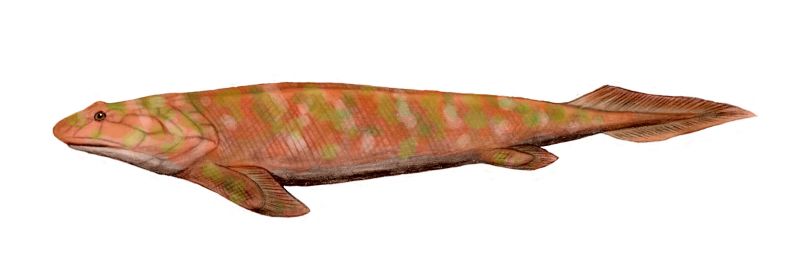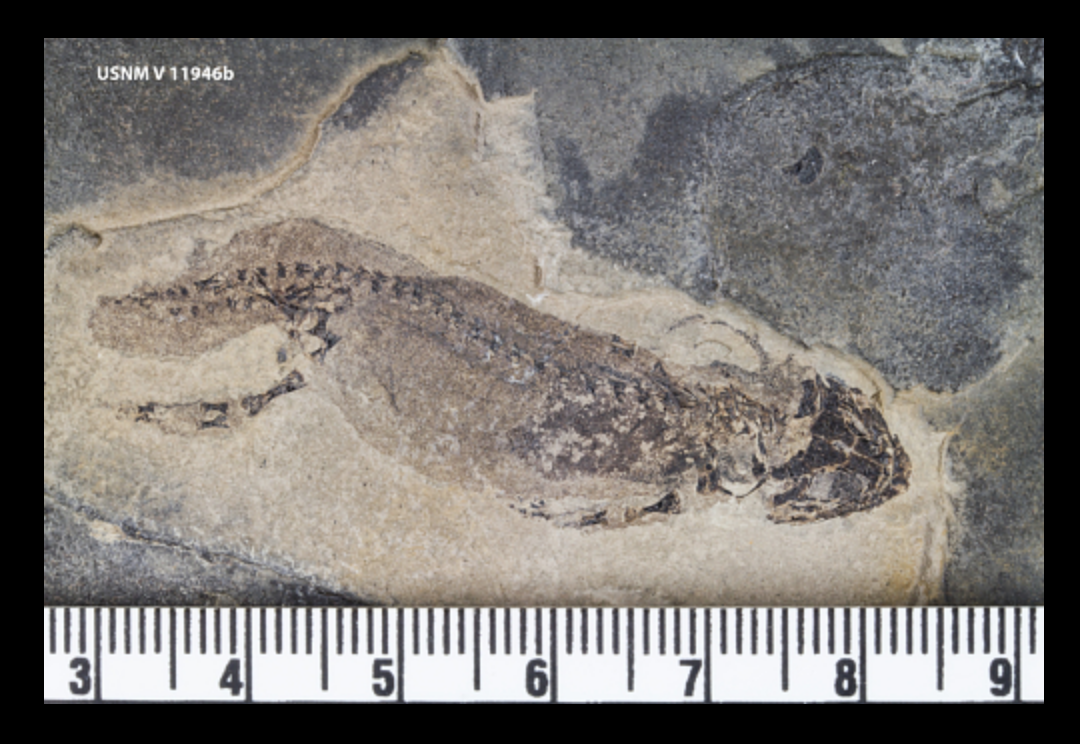|
Carboniferous Tetrapods
Carboniferous tetrapods include amphibians and reptiles that lived during the Carboniferous Period. Though stem-tetrapods originated in the preceding Devonian, it was in the earliest Carboniferous that the first crown tetrapods appeared, with full scaleless skin and five digits. During this time, amphibians (including many extinct groups unrelated to modern forms, referred to as "basal tetrapods") were the predominant tetrapods, and included the Temnospondyli, Lepospondyli, and Anthracosauria. The first amniotes appeared during the middle Carboniferous ( Early Pennsylvanian) from the lattermost group, and included both sauropsids and synapsids, but it was not until the very end of the Carboniferous, during a rainforest collapse, and afterwards that they began to diversify. Classification The following list of families of Carboniferous tetrapods is based mostly on Benton ed. 1993. The classification followBenton 2004 Superclass Tetrapoda * Basal Tetrapods ** Family Whatch ... [...More Info...] [...Related Items...] OR: [Wikipedia] [Google] [Baidu] |
Carboniferous
The Carboniferous ( ) is a geologic period and system of the Paleozoic that spans 60 million years from the end of the Devonian Period million years ago ( Mya), to the beginning of the Permian Period, million years ago. The name ''Carboniferous'' means "coal-bearing", from the Latin '' carbō'' ("coal") and '' ferō'' ("bear, carry"), and refers to the many coal beds formed globally during that time. The first of the modern 'system' names, it was coined by geologists William Conybeare and William Phillips in 1822, based on a study of the British rock succession. The Carboniferous is often treated in North America as two geological periods, the earlier Mississippian and the later Pennsylvanian. Terrestrial animal life was well established by the Carboniferous Period. Tetrapods (four limbed vertebrates), which had originated from lobe-finned fish during the preceding Devonian, became pentadactylous in and diversified during the Carboniferous, including early amphibian line ... [...More Info...] [...Related Items...] OR: [Wikipedia] [Google] [Baidu] |
Colosteidae
Colosteidae is a family of stegocephalians (tetrapod-like vertebrates) that lived in the Carboniferous period. They possessed a variety of characteristics from different tetrapod or stem-tetrapod groups, which made them historically difficult to classify. They are now considered to be part of a lineage intermediate between the earliest Devonian terrestrial vertebrates (such as '' Ichthyostega''), and the different groups ancestral to all modern tetrapods, such as temnospondyls (probably ancestral to modern amphibians) and reptiliomorphs (ancestral to amniotes such as mammals, reptiles, and birds). Description Colosteids had elongated bodies, with an estimated 40 vertebrae, not including the tail. The skull is flat and composed of many separate bones, like that of other stegocephalians. Colosteids lacked otic notches at the back of the head, unlike temnospondyls and other "labyrinthodont "Labyrinthodontia" (Greek, 'maze-toothed') is an informal grouping of extinct predatory ... [...More Info...] [...Related Items...] OR: [Wikipedia] [Google] [Baidu] |
Amphibamidae
The Amphibamidae are an extinct family of dissorophoid temnospondyls known from Late Carboniferous-Early Permian strata in the United States. Classification Amphibamidae has traditionally included small-bodied, terrestrial dissorophoids. The name is attributed to Moodie (1909), but it was rarely used because it originally referred only to ''Amphibamus''. Similar monogeneric families were also erected for other small, terrestrial dissorophoids (e.g., Doleserpetontidae), and most of the taxa now recognized as amphibamiforms were placed within the Dissorophidae. Clack & Milner (1993) revived the Amphibamidae to include ''Amphibamus, Platyrhinops, Doleserpeton,'' and ''Tersomius'.'' Daly (1994) further expanded the composition of the Amphibamidae to include the newly described ''Eoscopus'' as well as the Early Triassic form ''Micropholis''. She suggested that the micromelerpetids were also amphibamids, which has not been validated by more recent workers. Subsequent phylogenetic wor ... [...More Info...] [...Related Items...] OR: [Wikipedia] [Google] [Baidu] |
Branchiosauridae
Branchiosauridae is an extinct family of small amphibamiform temnospondyls with external gills and an overall juvenile appearance. The family has been characterized by hundreds of well-preserved specimens from the Permo-Carboniferous of Middle Europe.Schoch, R.R. 2008. The intrarelationships and evolutionary history of the temnospondyl family branchiosauridae. Journal of Systematic Palaeontology. 6(4):409-431. Specimens represent well defined ontogenetic stages and thus the taxon has been described to display paedomorphy (perennibranchiate). However, more recent work has revealed branchiosaurid taxa that display metamorphosing trajectories.Schoch, R.R. and Frobisch, N.B. 2006. Alternative Pathways in an Extinct Amphibian Clade. Evolution. 60(7):1467-1475 The name Branchiosauridae (“Branchio” in Ancient Greek denoting gills and “saurus” meaning lizard) refers to the retention of gills. Geological/paleoenvironmental information Branchiosaurids mostly inhabited Permo-Carbo ... [...More Info...] [...Related Items...] OR: [Wikipedia] [Google] [Baidu] |
Micromelerpetontidae
Micromelerpetontidae (also spelled Micromelerpetidae) is an extinct family of dissorophoid temnospondyl amphibians that lived from the Late Carboniferous to the Early Permian in what is now Europe, with one Carboniferous species also known from North Africa. They were biologically similar to the related branchiosaurids, but proportionally akin to the unrelated microsaurs. Micromelerpetontids were neotenic and aquatic, similar to their relatives the branchiosaurids. They had lateral line grooves, poorly ossified skulls and limbs, and evidence of external gills External gills are the gills of an animal, most typically an amphibian, that are exposed to the environment, rather than set inside the pharynx and covered by gill slits, as they are in most fishes. Instead, the respiratory organs are set on a fril .... However, they had a higher number of vertebrae (and therefore more elongated bodies) compared to branchiosaurids, as well as thick, bony scales covering the belly and limbs ... [...More Info...] [...Related Items...] OR: [Wikipedia] [Google] [Baidu] |
Dissorophidae
Dissorophidae is an extinct family of medium-sized, temnospondyl amphibians that flourished during the late Carboniferous and early Permian periods. The clade is known almost exclusively from North America. History of study Dissorophidae is a diverse clade that was named in 1902 by George A. Boulenger. Junior synonyms include Otocoelidae, Stegopidae, and Aspidosauridae. Early in the study of dissorophoids when the relationships of different taxa were not well-resolved and most taxa had not been described, Dissorophidae sometimes came to include taxa that are now not regarded as dissorophids and may have excluded earlier described taxa that are now regarded as dissorophids. Amphibamiforms were widely regarded as small-bodied dissorophids, and at one point, Dissorophidae was also suggested to also include Trematopidae. 19th century In 1895, American paleontologist Edward Drinker Cope named ''Dissorophus'' from the early Permian of Texas. This was the first dissorophid to be d ... [...More Info...] [...Related Items...] OR: [Wikipedia] [Google] [Baidu] |
Trematopidae
Trematopidae is a family of dissorophoid temnospondyl spanning the late Carboniferous to the early Permian. Together with Dissorophidae, the family forms Olsoniformes, a clade comprising the medium-large terrestrial dissorophoids. Trematopids are known from numerous localities in North America, primarily in New Mexico, Oklahoma, and Texas, and from the Bromacker quarry in Germany. History of study The clade Trematopidae was first proposed by American paleontologist S.W. Williston in 1910, although it was named as "Trematopsidae" following the historical (but inaccurate) derivation from the genus "''Trematops''" (now synonymized with ''Acheloma''). British paleontologist D.M.S. Watson proposed a related clade in 1919, Achelomidae, for ''Acheloma'', based on perceived differences separating the taxa; this is now considered a junior synonym of Trematopidae following guidelines of historical precedent. 19th century history In 1882, American paleontologist Edward Drinker Cope na ... [...More Info...] [...Related Items...] OR: [Wikipedia] [Google] [Baidu] |
Eryopidae
Eryopidae were a group of medium to large amphibious temnospondyli, known from North America and Europe. They are defined as all eryopoids with interpterygoid vacuities (spaces in the interpterygoid bone) that are rounded at the front; and large external nares (Laurin and Steyer 2000). Not all of the genera previously included in the Eryopidae (Carroll 1988) are retained under the cladistic revisions. Gallery File:Eryops1DB.jpg, '' Eryops megacephalus'', of the late Carboniferous to early Permian of North America File:Onchiodon12DB.jpg, ''Onchiodon'', of the late Carboniferous to early Permian of Europe and North America File:Actinodon frossardi 1DB.jpg, '' Actinodon frossardi'', of the early Permian of France France (), officially the French Republic ( ), is a country primarily located in Western Europe. It also comprises of Overseas France, overseas regions and territories in the Americas and the Atlantic Ocean, Atlantic, Pacific Ocean, Pac ... File:Clamorosaur ... [...More Info...] [...Related Items...] OR: [Wikipedia] [Google] [Baidu] |
Trimerorhachidae
Trimerorhachidae is a family of dvinosaurian temnospondyls, including Trimerorhachis and Neldasaurus. They are vertebrates and carnivores. Gallery Trimerorhachis insignis life restoration.jpg, '' Trimerorhachis insignis'', of the early Permian of Texas Neldasaurus wrightae.jpg, '' Neldasaurus wrightae'', of the early Permian of Texas Procuhy nazariensis (cropped).jpg, '' Procuhy nazariensis'', of the early Permian of Brazil Brazil ( pt, Brasil; ), officially the Federative Republic of Brazil (Portuguese: ), is the largest country in both South America and Latin America. At and with over 217 million people, Brazil is the world's fifth-largest country by area ... References Dvinosaurs Amphibian families {{Temnospondyli-stub ... [...More Info...] [...Related Items...] OR: [Wikipedia] [Google] [Baidu] |
Cochleosauridae
Cochleosauridae is a family of edopoid temnospondyl amphibians, among the most basal of temnospondyls. Most members of this family are known from the late Carboniferous ( Pennsylvanian) and early Permian ( Cisuralian) of Europe and North America, though '' Nigerpeton'' is known from the Late Permian (Lopingian) of Niger in North Africa. Gallery Cochleosaurus.jpg, '' Cochleosaurus'', of the late Carboniferous of central Europe and Nova Scotia Chenoprosopus 2DB.jpg, '' Chenoprosopus milleri'', of the late Carboniferous and early Permian of New Mexico Nigerpeton.jpg, '' Nigerpeton ricqlesi'', of the late Permian of Niger Saharastega BW.jpg, '' Saharastega moradiensis'', a possible cochleosaurid of the late Permian of Niger ) , official_languages = , languages_type = National languages [...More Info...] [...Related Items...] OR: [Wikipedia] [Google] [Baidu] |



